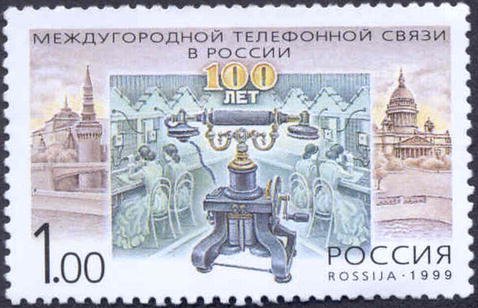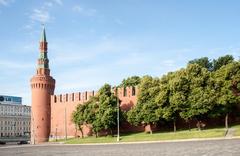
Beklemishevskaya Tower Visiting Hours, Tickets, and Moscow Historical Sites Guide
Date: 15/06/2025
Introduction
Beklemishevskaya Tower, also known as Moskvoretskaya Tower, stands as a formidable symbol of Moscow’s medieval strength and architectural ingenuity. Rising at the southeastern corner of the Moscow Kremlin, this unique cylindrical tower is a testament to the blend of Italian Renaissance military design and traditional Russian fortification. Though its interior is not open to the public, visitors to the Kremlin can admire its imposing exterior, learn about its historical significance, and enjoy panoramic views of Moscow’s skyline. This guide provides detailed information on the tower’s history, architectural features, visiting hours, ticketing, accessibility, practical tips, and nearby attractions, ensuring you make the most of your exploration of Moscow’s historical heart.
Contents
- Introduction
- Historical Background and Strategic Importance
- Architectural Features
- Naming and Cultural Symbolism
- Visiting Information
- Hours and Tickets
- Accessibility
- Tours and Photography
- Practical Travel Tips
- Nearby Attractions
- Restoration and Preservation
- Frequently Asked Questions (FAQ)
- Conclusion
- Sources and Further Reading
Historical Background and Strategic Importance
Beklemishevskaya Tower marks the point where the Kremlin wall meets the Moskva River and the former moat that protected Red Square (kremlin-architectural-ensemble.kreml.ru). Constructed between 1487 and 1488 under Ivan III, the tower was designed by Italian architect Marco Ruffo (Mark Fryazin). Its placement guarded the vulnerable southeastern approach to the Kremlin, making it crucial for Moscow’s defense (4traveler.me).
Throughout history, the tower played a defensive role during sieges and was used as a prison for disgraced nobles and political prisoners. Its resilience, including surviving attacks during the Time of Troubles and the Napoleonic invasion, highlights its strategic importance in Moscow’s military history (rbth.com).
Architectural Features
Beklemishevskaya Tower’s cylindrical form sets it apart from most other Kremlin towers, which are predominantly square or rectangular (wikipedia.org). Standing 46.2 meters tall, the tower’s robust, red-brick construction was a technological innovation introduced by Italian architects during the Kremlin’s late 15th-century modernization (Friendly Local Guides; Advantour).
Key architectural features include:
- Cylindrical Structure: Facilitates defense and provides a commanding field of fire.
- Thick Walls: Several meters thick at the base, with arrow slits and machicolations for defensive combat.
- Octagonal Tented Roof: Added in 1680, topped with a gilded weathervane, blending military function with decorative flair.
- Interior Levels: Historically included prison holds and observation posts, though not accessible to the public today (moscow.info).
The tower’s austere external style emphasizes its defensive purpose, contrasting with more ornate Kremlin towers like Spasskaya.
Naming and Cultural Symbolism
The tower derives its name from Ivan Bersen-Beklemishev, a boyar whose estate adjoined this corner of the Kremlin. It is also known as Moskvoretskaya Tower due to its proximity to the Moskva River and Moskvoretsky Bridge (Advantour). Over the centuries, Beklemishevskaya Tower has become a symbol of Moscow’s resilience and has inspired artists, writers, and architects with its imposing presence and historical legacy.
Visiting Information
Hours and Tickets
- Kremlin Grounds: Open to visitors from 10:00 AM to 5:00 PM, Tuesday to Sunday (closed on Thursdays). Opening hours may vary on public holidays and during official events—always check the official Kremlin website for current times.
- Tickets: Entry to the Kremlin grounds ranges from 700–1,000 RUB for adults, with discounts for students and children. It is highly recommended to purchase tickets online in advance, especially during peak seasons (owlovertheworld.com).
- Beklemishevskaya Tower Access: The tower itself is not open for interior visits, but its exterior can be enjoyed from the Kremlin grounds and nearby viewpoints.
Accessibility
The Kremlin grounds are generally accessible for visitors with mobility impairments, though the terrain includes cobblestones and some uneven surfaces. The historic nature of the towers means there are no elevators or ramps inside them.
Tours and Photography
- Guided Tours: Many Kremlin tours include information about Beklemishevskaya Tower, providing historical context and architectural details.
- Photography: The best views are from the Moskvoretskaya Embankment and Moskvoretsky Bridge, particularly at sunrise or sunset. Drones are prohibited around the Kremlin.
Practical Travel Tips
- Arrive Early: Avoid peak crowds by visiting early in the day.
- Transportation: The nearest metro stations are Biblioteka Imeni Lenina, Borovitskaya, and Aleksandrovsky Sad. Use the Yandex Metro app for navigation.
- Language: English is not widely spoken. Basic Russian phrases or a translation app (like Yandex Translate) are helpful.
- Identification: Carry your passport for security checks at the Kremlin entrance.
- Safety: The Kremlin is heavily patrolled, but remain alert for pickpockets in crowded areas (travelexperts.justgorussia.co.uk).
Nearby Attractions
- Red Square: Iconic public square with access to St. Basil’s Cathedral and the State Historical Museum.
- Zaryadye Park: Modern urban park with river and Kremlin views.
- GUM Department Store: Historic shopping arcade on Red Square.
- Cathedral Square: Center of the Kremlin’s religious and political life.
Cafés, restrooms, and souvenir shops are available within and around the Kremlin.
Restoration and Preservation
Beklemishevskaya Tower has undergone several restoration projects, particularly after damages sustained during the Bolshevik Revolution in 1917. Major restoration efforts in 1920, 1949, and 1973 have preserved its original 15th-century design and architectural details (ermakvagus.com).
Frequently Asked Questions (FAQ)
Can I go inside Beklemishevskaya Tower?
No, the tower’s interior is closed to the public, but its exterior is accessible from the Kremlin grounds.
How do I buy tickets for the Kremlin?
Tickets are available online or at the Kremlin ticket office. Advance purchase is recommended.
Is Beklemishevskaya Tower accessible for people with disabilities?
The Kremlin grounds have some accessibility features, but the tower itself does not have ramps or elevators.
Are there tours about Beklemishevskaya Tower?
Yes, many Kremlin tours include information about the tower’s history and architecture.
Are there special events at Beklemishevskaya Tower?
While the tower does not host events, it is a backdrop for major Kremlin festivities and ceremonies.
Conclusion
Beklemishevskaya Tower is a powerful emblem of Moscow’s history, blending Italian Renaissance innovation with Russian fortification tradition. While visitors cannot enter the tower, its exterior and the surrounding Kremlin offer rich opportunities for exploration, learning, and photography. Plan your visit by checking official hours, securing tickets in advance, and considering a guided tour for deeper insights into this remarkable landmark.
Maximize your experience by downloading the Audiala app for guided Moscow tours and travel updates. Explore related posts on Kremlin towers and historical sites, and follow official channels for the latest news and tips.
Sources and Further Reading
- Beklemishevskaya Bashnya Moskovskogo Kremlya, Official Moscow Kremlin Website
- Fun Facts About Kremlin Towers, Friendly Local Guides
- Beklemishevskaya Tower Moscow Kremlin, Advantour
- Beklemishevskaya Tower, Wikipedia
- Moscow Kremlin Tower Guide, Owlovertheworld
- How Many Towers of the Moscow Kremlin, Delachieve
- Traveling to Russia in 2025, JustGoRussia Travel Experts
- Facts About Kremlin Towers, Russia Beyond
- Beklemishevskaya Tower Restoration, ErmakVagus
- Moscow Tourist Information, Hikersbay





















































































































































































































































































